| Los Angeles | |||||||||
|---|---|---|---|---|---|---|---|---|---|
| City | |||||||||
| City of Los Angeles | |||||||||
| |||||||||
| |||||||||
| Nickname(s): "L.A.", "City of Angels",[1]"Angeltown",[2] "The Big Orange"[3][4] "Lalaland", "Tinseltown"[5] "City of Flowers and Sunshine"[6] | |||||||||
 Location in Los Angeles County in the state of California | |||||||||
| Coordinates: 34°03′N 118°15′WCoordinates: 34°03′N 118°15′W | |||||||||
| Country | |||||||||
| State | |||||||||
| County | |||||||||
| Settled | September 4, 1781 | ||||||||
| Incorporated | April 4, 1850 | ||||||||
| Government | |||||||||
| • Type | Mayor-Council | ||||||||
| • Body | Los Angeles City Council | ||||||||
| • Mayor | Eric Garcetti (D) | ||||||||
| • City Attorney | Mike Feuer | ||||||||
| • City Controller | Ron Galperin | ||||||||
| Area[7] | |||||||||
| • City | 503 sq mi (1,302 km2) | ||||||||
| • Land | 469 sq mi (1,214 km2) | ||||||||
| • Water | 34 sq mi (88 km2) 6.7% | ||||||||
| Elevation | 233 (city hall) ft (71 m) | ||||||||
| Population (2014) | |||||||||
| • City | 3,904,657 | ||||||||
| • Rank | 2nd U.S., 48th world | ||||||||
| • Density | 8,225/sq mi (3,176/km2) | ||||||||
| • Urban | 15,067,000[9] | ||||||||
| • Metro | 16,400,000[8] | ||||||||
| • CSA | 17,786,419 | ||||||||
| Demonym | Angeleno | ||||||||
| Time zone | PST (UTC-8) | ||||||||
| • Summer (DST) | PDT (UTC−7) | ||||||||
| ZIP code | 90001–90068, 90070–90084, 90086–90089, 90091, 90093–90097, 90099, 90101–90103, 90174, 90185, 90189, 90291–90293, 91040–91043, 91303–91308, 91342–91349, 91352–91353, 91356–91357, 91364–91367, 91401–91499, 91601–91609 | ||||||||
| Area code(s) | 213, 310/424, 323, 661,747/818 | ||||||||
| FIPS code | 06-44000 | ||||||||
| GNIS feature ID | 1662328 | ||||||||
| Website | lacity.org | ||||||||
Los Angeles ( i/lɔːs ˈændʒələs/, /lɔːs ˈæŋɡələs/ or
i/lɔːs ˈændʒələs/, /lɔːs ˈæŋɡələs/ or  i/lɒs ˈændʒəliːz/, Spanish: Los Ángeles [los ˈaŋxeles] meaning The Angels), officially the City of Los Angeles, often known by its initials L.A., is the most populous city in the U.S. state ofCalifornia and the second-most populous in the United States, after New York City, with a population at the 2010 United States Census of 3,792,621.[10] It has a land area of 469 square miles (1,215 km2), and is located in Southern California.
i/lɒs ˈændʒəliːz/, Spanish: Los Ángeles [los ˈaŋxeles] meaning The Angels), officially the City of Los Angeles, often known by its initials L.A., is the most populous city in the U.S. state ofCalifornia and the second-most populous in the United States, after New York City, with a population at the 2010 United States Census of 3,792,621.[10] It has a land area of 469 square miles (1,215 km2), and is located in Southern California.
The city is the focal point of the larger Los Angeles–Long Beach–Santa Ana metropolitan statistical area and Greater Los Angeles Area region, which contain 13 million[11] and over 18 million people in Combined statistical area respectively as of 2010, making it one of the most populous metropolitan areas in the world[12] and the second-largest in the United States.[13]Los Angeles is also the seat of Los Angeles County, the most populated and one of the most ethnically diverse counties[14] in the United States, while the entire Los Angeles area itself has been recognized as the most diverse of the nation's largest cities.[15] The city's inhabitants are referred to as Angelenos.[16]
Los Angeles was founded on September 4, 1781, by Spanish governor Felipe de Neve.[17] It became a part of Mexico in 1821 following the Mexican War of Independence.[18] In 1848, at the end of the Mexican–American War, Los Angeles and the rest of California were purchased as part of the Treaty of Guadalupe Hidalgo, thereby becoming part of the United States.[19] Los Angeles was incorporated as a municipality on April 4, 1850, five months before California achieved statehood.[20]
Nicknamed the City of Angels, Los Angeles is a global city, with strengths in business, international trade, entertainment, culture, media, fashion, science, sports, technology, education, medicine and research and has been ranked sixth in the Global Cities Index and 9th Global Economic Power Index. The city is home to renowned institutions covering a broad range of professional and cultural fields and is one of the most substantial economic engines within the United States. The Los Angelescombined statistical area (CSA) has a gross metropolitan product (GMP) of $831 billion (as of 2008), making it the third-largest in the world, after the Greater Tokyo and New York metropolitan areas.[21] Los Angeles includes Hollywood and leads the world in the creation of television productions, video games, and recorded music; it is also one of the leaders in motion picture production.[22] Additionally, Los Angeles hosted the Summer Olympic Games in 1932 and 1984.
Contents
[hide]History
Historical affiliations
Main article: History of Los Angeles
See also: Los Angeles in the 1920s
The Los Angeles coastal area was first settled by the Tongva (or Gabrieleños) and Chumash Native American tribes thousands of years ago. A Gabrielino settlement in the area was called iyáangẚ (written Yang-na by the Spanish), meaning "poison oak place".[23][24]
Juan Rodríguez Cabrillo, a Portuguese-born explorer, claimed the area of southern California for the Spanish Empire in 1542.[25] Gaspar de Portolà andFranciscan missionary Juan Crespí, reached the present site of Los Angeles on August 2, 1769.[26]
In 1771, Franciscan friar Junípero Serra directed the building of the Mission San Gabriel Arcángel, the first mission in the area.[27] On September 4, 1781, a group of forty-four settlers known as "Los Pobladores" founded the pueblo called "El Pueblo de Nuestra Señora la Reina de los Ángeles del Río de Porciúncula"; in English it is "The Town of Our Lady the Queen of Angels of the Porciúncula River". The Queen of Angels is an honorific of the Virgin Mary.[28] Two-thirds of the settlers weremestizo or mulatto with a mixture of African, indigenous and European ancestry.[29]The settlement remained a small ranch town for decades, but by 1820, the population had increased to about 650 residents.[30] Today, the pueblo is commemorated in the historic district of Los Angeles Pueblo Plaza and Olvera Street, the oldest part of Los Angeles.[31]
New Spain achieved its independence from the Spanish Empire in 1821, and the pueblo continued as a part of Mexico. During Mexican rule, Governor Pío Pico made Los Angeles Alta California's regional capital. Mexican rule ended during the Mexican–American War: Americans took control from the Californios after a series of battles, culminating with the signing of the Treaty of Cahuenga on January 13, 1847.[32]
Railroads arrived with the completion of the Southern Pacific line to Los Angeles in 1876.[33] Oil was discovered in 1892, and by 1923, the discoveries had helped California become the country's largest oil producer, accounting for about one-quarter of the world's petroleum output.[34]
By 1900, the population had grown to more than 102,000,[35] putting pressure on the city's water supply.[36] The completion of the Los Angeles Aqueduct in 1913, under the supervision of William Mulholland, assured the continued growth of the city.[37]
In 1910, not only had the city of Los Angeles annexed Hollywood, but there were already at least 10 movie companies operating in the city. By 1921, more than 80 percent of the world's film industry was concentrated in L.A.[38] The money generated by the industry kept the city insulated from much of the economic pain suffered by the rest of the country during the Great Depression.[39] By 1930, the population surpassed one million.[40] In 1932, the city hosted the Summer Olympics.
During World War II, Los Angeles was a major center of wartime manufacturing, such as shipbuilding and aircraft. Calship built hundreds of Liberty Ships and Victory Ships on Terminal Island, and the Los Angeles area was the headquarters of six of the country's major aircraft manufacturers (Douglas Aircraft Company, Hughes Aircraft, Lockheed, North American Aviation, Northrop Corporation, and Vultee. During the war, more aircraft were produced in one year than in all the pre-war years since the Wright brothers invented the airplane in 1903, combined. Manufacturing in Los Angeles skyrocketed, and as William S. Knudsen, of the National Defense Advisory Commission put it, "We won because we smothered the enemy in an avalanche of production, the like of which he had never seen, nor dreamed possible.[41]
Following the end of World War II, Los Angeles grew more rapidly than ever, sprawling into theSan Fernando Valley.[43] In 1969, Los Angeles became one of the birthplaces of the Internet, as the first ARPANET transmission was sent from the University of California, Los Angeles (UCLA) to SRI in Menlo Park.[44]
In 1984, the city hosted the Summer Olympic Games for the second time. Despite being boycotted by 14 Communist countries, the 1984 Olympics became more financially successful than any previous,[45] and the second Olympics to turn a profit until then – the other, according to an analysis of contemporary newspaper reports, being the 1932 Summer Olympics, also held in Los Angeles.[46]
Racial tensions erupted on April 29, 1992, with the acquittal by a Simi Valley jury of the police officers captured on videotape beatingRodney King, culminating in large-scale riots.[47] In 1994, the 6.7 Northridge earthquake shook the city, causing $12.5 billion in damage and 72 deaths.[48] The century ended with the Rampart scandal, one of the most extensive documented cases of police misconduct in American history.[49]
In 2002, voters defeated efforts by the San Fernando Valley and Hollywood to secede from the city.[50]
Geography
See also: Los Angeles Basin, San Fernando Valley, Greater Los Angeles Area and Los Angeles County, California
Cityscape
Main article: List of districts and neighborhoods of Los Angeles
The city is divided into over 80 districts and neighborhoods,[51] many of which were incorporated places or communities that were annexed by the city.[52] Greater Los Angeles includes a number of enclaves and nearby communities. Generally, the city is divided into the following areas: Downtown Los Angeles, East Los Angeles and Northeast Los Angeles, South Los Angeles, the Harbor Area, Greater Hollywood, Wilshire, the Westside, and the San Fernando and Crescenta Valleys.
Some well-known communities within Los Angeles include West Adams, Watts, Leimert Park, Baldwin Hills, Venice, theDowntown Financial District, Silver Lake, Hollywood, Koreatown, Westwood and the more affluent areas of Bel Air, Benedict Canyon, Hollywood Hills, Los Feliz, Hancock Park, Pacific Palisades, Century City, and Brentwood.
Landmarks
See also: Category:Landmarks in Los Angeles, California, List of sites of interest in the Los Angeles area and National Register of Historic Places listings in Los Angeles, California
Important landmarks in Los Angeles include Walt Disney Concert Hall, the Cathedral of Our Lady of the Angels, Angels Flight, the Kodak Theatre, the Griffith Observatory, the Getty Center, the Getty Villa, the Los Angeles Memorial Coliseum, the Los Angeles County Museum of Art, Grauman's Chinese Theatre, the Hollywood Sign, the Bradbury Building, Hollywood Boulevard, the Capitol Records Building, Los Angeles City Hall, the Hollywood Bowl, the Theme Building, Battleship USS Iowa, the Watts Towers, the Staples Center, Dodger Stadium, La Placita Olvera/Olvera Street and the Children's Hospital Los Angeles Sunset Bridge.
Topography
Los Angeles is irregularly shaped and covers a total area of 502.7 square miles (1,302 km2), comprising 468.7 square miles (1,214 km2) of land and 34.0 square miles (88 km2) of water.[7] The city extends for 44 miles (71 km) longitudinally and for 29 miles (47 km) latitudinally. The perimeter of the city is 342 miles (550 km).
Los Angeles is both flat and hilly. The highest point in the city is 5,074 ft (1,547 m) Mount Lukens,[53][54] located at the northeastern end of the San Fernando Valley. The eastern end of the Santa Monica Mountains stretches from Downtown to the Pacific Ocean and separates the Los Angeles Basin from the San Fernando Valley. Other hilly parts of Los Angeles include the Mt. Washington area north of Downtown, eastern parts such as Boyle Heights, the Crenshaw district around the Baldwin Hills, and the San Pedro district.
The Los Angeles River, which is largely seasonal, is the primary drainage channel. It was straightened and lined in 51 miles of concrete by the Army Corps of Engineers to act as a flood control channel.[55] The river begins in the Canoga Park district of the city, flows east from the San Fernando Valley along the north edge of the Santa Monica Mountains, and turns south through the city center, flowing to its mouth in the Port of Long Beach at the Pacific Ocean. The smaller Ballona Creek flows into the Santa Monica Bay at Playa del Rey.
The Los Angeles area is rich in native plant species due in part to a diversity in habitats, including beaches, wetlands, and mountains. The most prevalent botanical environment iscoastal sage scrub,[56] which covers the hillsides in combustible chaparral. Native plants include: California poppy, matilija poppy, toyon, Coast Live Oak, and Giant Wildrye. Many of these native species, such as the Los Angeles sunflower, have become so rare as to be considered endangered. Though it is not native to the area, the official tree of Los Angeles is the Coral Tree (Erythrina caffra)[57] and the official flower of Los Angeles is the Bird of Paradise (Strelitzia reginae).[58] Mexican Fan Palms, Canary Island Palms, andCalifornia Fan Palms are common in the Los Angeles area, although only the last is native.
Geology
Los Angeles is subject to earthquakes due to its location on the Pacific Ring of Fire. The geologic instability has produced numerous faults, which cause approximately 10,000 earthquakes annually in Southern California, though most of them are too small to be felt.[59] One of the major faults is the San Andreas Fault. Located at the boundary between the Pacific Plate and the North American Plate, it is predicted to be the source of Southern California's next big earthquake.[60] Major earthquakes to have hit the Los Angeles area include the 1994 Northridge earthquake, the 1987 Whittier Narrows earthquake, the 1971 San Fernando earthquake near Sylmar, and the 1933 Long Beach earthquake. Nevertheless, all but a few quakes are of low intensity and are not felt.[59] The Los Angeles basin and metropolitan area are also at risk from blind thrust earthquakes.[61] Parts of the city are also vulnerable to tsunamis; harbor areas were damaged by waves from the Valdivia earthquake in 1960.[62]
Climate
Main article: Climate of the Los Angeles Basin
Los Angeles has a Subtropical-Mediterranean climate (Köppen climate classification Csb on the coast, Csa inland), and receives just enough annual precipitation to avoid either Köppen's BSh or BSk (semi-arid climate) classification. Los Angeles has plenty of sunshine throughout the year, with an average of only 35 days with measurable precipitation annually.[63]
The average annual temperature in downtown is 66 °F (19 °C): 75 °F (24 °C) during the day and 57 °F (14 °C) at night. In the coldest month, January, the temperature typically ranges from 59 to 73 °F (15 to 23 °C) during the day and 45 to 55 °F (7 to 13 °C) at night. In the warmest month – August – the temperature typically ranges from 79 to 90 °F (26 to 32 °C) during the day and around 64 °F (18 °C) at night.
Temperatures exceed 90 °F (32 °C) on a dozen or so days in the year, from one day a month in April, May, June and November to three days a month in July, August, October and to five days in September.[63] Temperatures are subject to substantial daily swings; in inland areas the difference between the average daily low and the average daily high is over 30 Fahrenheit (16 Celsius) degrees.[64] The average annual temperature of the sea is 63 °F (17 °C), from 58 °F (14 °C) in January to 68 °F (20 °C) in August.[65] Hours of sunshine total more than 3,000 per year, from an average of 7 hours of sunshine per day in December to an average of 12 in July.[66]
The Los Angeles area is also subject to phenomena typical of a microclimate, causing extreme variations in temperature in close physical proximity to each other. For instance, the average July maximum temperature at the Santa Monica Pier is 75 °F (24 °C) whereas it is 95 °F (35 °C) in Canoga Park.[67] The city, like much of the southern California coast, is subject to a late spring/early summer weather phenomenon called "June Gloom." This involves overcast or foggy skies in the morning which yield to sun by early afternoon.[68]
Downtown Los Angeles averages 15.14 inches (384.6 mm) of precipitation annually, which mainly occurs during the winter and spring (November through April), generally in the form of moderate rain showers, but often as heavy rainfall and thunderstorms during winter storms. The coast gets slightly less rainfall, while the mountains get slightly more. However the San Fernando Valley Region of Los Angeles can get between 16 and 20 inches (410 and 510 mm) of rain per year. Years of average rainfall are rare; the usual pattern is bimodal, with a short string of dry years (perhaps 7–8 inches or 180–200 millimetres) followed by one or two wet years that make up the average. Snowfall is extremely rare in the city basin, but the mountains within city limits typically receive snowfall every winter. The greatest snowfall recorded in downtown Los Angeles was 2 inches (5 cm) in 1932.[69] The highest recorded temperature in downtown Los Angeles is 113 °F (45 °C) on September 27, 2010[70] and the lowest recorded temperature is 24 °F (−4 °C) on December 22, 1944.
| [show]Climate data for Los Angeles (USC, Downtown), 1981–2010 normals, extremes 1877–present |
|---|
| [show]Climate data for Los Angeles (LAX), 1981–2010 normals, extremes 1944–present |
|---|
| [show]Climate data for Los Angeles (Canoga Park, in the San Fernando Valley) |
|---|
Environmental issues
A Gabrielino settlement in the area was called iyáangẚ (written Yang-na by the Spanish), which has been translated as "poison oak place".[23][24] Yang-na has also been translated as "the valley of smoke."[76][77] Owing to geography, heavy reliance on automobiles, and the Los Angeles/Long Beach port complex, Los Angeles suffers from air pollution in the form of smog. The Los Angeles Basin and the San Fernando Valley are susceptible to atmospheric inversion, which holds in the exhausts from road vehicles, airplanes, locomotives, shipping, manufacturing, and other sources.[78]
The smog season lasts from May to October.[79] Unlike other large cities that rely on rain to clear smog, Los Angeles gets only 15 inches (380 mm) of rain each year: pollution accumulates over many consecutive days. Issues of air quality in Los Angeles and other major cities led to the passage of early national environmental legislation, including theClean Air Act. More recently, the state of California has led the nation in working to limit pollution by mandating low-emission vehicles. Smog is expected to continue to drop in the coming years due to aggressive steps to reduce it, which include electric and hybrid cars, improvements in mass transit, and other measures.
The number of Stage 1 smog alerts in Los Angeles has declined from over 100 per year in the 1970s to almost zero in the new millennium. Despite improvement, the 2006 and 2007 annual reports of the American Lung Association ranked the city as the most polluted in the country with short-term particle pollution and year-round particle pollution.[80] In 2008, the city was ranked the second most polluted and again had the highest year-round particulate pollution.[81] The city met its goal of providing 20 percent of the city's power from renewable sources in 2010.[82]
The American Lung Association's 2013 survey ranks the metro area as having the nation's worst smog, and fourth in both short term and year round pollution amounts.[83]
Demographics
Main article: Demographics of Los Angeles
| Historical population | |||
|---|---|---|---|
| Census | Pop. | %± | |
| 1850 | 1,610 | ||
| 1860 | 4,385 | 172.4% | |
| 1870 | 5,728 | 30.6% | |
| 1880 | 11,183 | 95.2% | |
| 1890 | 50,395 | 350.6% | |
| 1900 | 102,479 | 103.4% | |
| 1910 | 319,198 | 211.5% | |
| 1920 | 576,673 | 80.7% | |
| 1930 | 1,238,048 | 114.7% | |
| 1940 | 1,504,277 | 21.5% | |
| 1950 | 1,970,358 | 31.0% | |
| 1960 | 2,479,015 | 25.8% | |
| 1970 | 2,816,061 | 13.6% | |
| 1980 | 2,966,850 | 5.4% | |
| 1990 | 3,485,398 | 17.5% | |
| 2000 | 3,694,820 | 6.0% | |
| 2010 | 3,792,621 | 2.6% | |
| Est. 2014 | 3,904,657 | 3.0% | |
| source:[84][85] | |||
The 2010 United States Census[86] reported that Los Angeles had a population of 3,792,621.[87] The population density was 7,544.6 people per square mile (2,913.0/km²). The Census reported that 3,708,020 people (97.8% of the population) lived in households, 58,186 (1.5%) lived in non-institutionalized group quarters, and 26,415 (0.7%) were institutionalized.
The age distribution was 874,525 people (23.1%) under 18, 434,478 people (11.5%) from 18 to 24, 1,209,367 people (31.9%) from 25 to 44, 877,555 people (23.1%) from 45 to 64, and 396,696 people (10.5%) who were 65 or older.[87] The median age was 34.1 years. For every 100 females there were 99.2 males. For every 100 females age 18 and over, there were 97.6 males.[87]
There were 1,413,995 housing units—up from 1,298,350 during 2005–2009[87]—at an average density of 2,812.8 households per square mile (1,086.0/km²), of which 503,863 (38.2%) were owner-occupied, and 814,305 (61.8%) were occupied by renters. The homeowner vacancy rate was 2.1%; the rental vacancy rate was 6.1%. 1,535,444 people (40.5% of the population) lived in owner-occupied housing units and 2,172,576 people (57.3%) lived in rental housing units.
According to the 2010 United States Census, Los Angeles had a median household income of $49,745, with 21.2% of the population living below the federal poverty line.[87]
Race and ethnicity
| [hide]Racial composition | 2010[87] | 1990[88] | 1970[88] | 1940[88] |
|---|---|---|---|---|
| White | 49.8% | 52.8% | 77.2% | 93.5% |
| —Non-Hispanic | 28.7% | 37.3% | 61.1%[89] | 86.3% |
| Black or African American | 9.6% | 14.0% | 17.9% | 4.2% |
| Hispanic or Latino (of any race) | 48.5% | 39.9% | 17.1%[89] | 7.1%[90] |
| Asian | 11.3% | 9.8% | 3.6% | 2.2% |
Los Angeles is home to people from more than 140 countries speaking 224 different identified languages.[91] Ethnic enclaves like Chinatown,Historic Filipinotown, Koreatown, Little Armenia, Little Ethiopia, Tehrangeles, Little Tokyo, and Thai Town provide examples of the polyglotcharacter of Los Angeles.
According to the 2010 Census, the racial makeup of Los Angeles included: 1,888,158 Whites (49.8%), 365,118 African Americans (9.6%), 28,215Native Americans (0.7%), 426,959 Asians (11.3%), 5,577 Pacific Islanders (0.1%), 902,959 from other races (23.8%), and 175,635 (4.6%) fromtwo or more races.[87] Hispanics or Latinos of any race were 1,838,822 persons (48.5%).
Non-Hispanic whites were 28.7% of the population in 2010,[87] compared to 86.3% in 1940.[88] Mexicans make up the largest ethnic group of Latinos at 31.9% of Los Angeles' population, followed by Salvadorans (6.0%) and Guatemalans (3.6%). The Latino population is spread throughout the city of Los Angeles and its metropolitan area but it is most heavily concentrated in the East Los Angeles region, which has a long established Mexican American and Central American community.
The largest Asian ethnic groups are Filipinos (3.2%) and Koreans (2.9%), which have their own established ethnic enclaves−Koreatown in the Wilshire Center and Historic Filipinotown. Chinese people, which make up 1.8% of Los Angeles' population, reside mostly outside of Los Angeles city limits and rather in the San Gabriel Valley of eastern Los Angeles County, but make a sizable presence in the city, notably in Chinatown. Chinatown and Thaitown are also home to many Thais and Cambodians, which make up 0.3% and 0.1% of Los Angeles' population, respectively.Japanese comprise 0.9% of L.A.'s population, and have an established Little Tokyo in the city's downtown, and another significant community of Japanese Americans is located in the Sawtelle district of West Los Angeles. Vietnamese make up 0.5% of Los Angeles' population. Indians make up 0.9% of the city's population.
The city of Los Angeles and its metropolitan area are home to a large Middle Eastern population, including Armenians and Iranians, partially residing in enclaves like Little Armeniaand Tehrangeles.
African Americans have the largest establishment in South Los Angeles, including the industrial neighborhoods of Crenshaw and Watts.[92] In 1970, the Census Bureau reported city's population as 17.9% black, 61.1% non-Hispanic white and 17.1% Hispanic.[88] However, since the 1980s, there has been a large influx of immigration from Mexico and Central America which have outnumbered the blacks in South Los Angeles. South Los Angeles, as well as neighboring communities such as the city of Compton that were home to predominant African American populations are now transforming into Hispanic communities.[93]
Pacific Islanders make up 0.1% of Los Angeles' population, and are concentrated in southwestern Los Angeles County, namely in Long Beach and Carson, which are home to thousands of Samoan Americans.[94]
Religion
See also: Hinduism in Los Angeles
The Roman Catholic Archbishop of Los Angeles leads the largest archdiocese in the country.[95] Cardinal Roger Mahony oversaw construction of the Cathedral of Our Lady of the Angels, which opened in September 2002 in downtown Los Angeles.[96] Construction of the cathedral marked a coming of age of the city's Catholic, heavily Latino community. There are numerous Catholic churches and parishes throughout Los Angeles.
With 621,000 Jews in the metropolitan area (490,000 in city proper), the region has the second largest population of Jews in the United States.[97] Many of Los Angeles' Jews now live on the Westside and in the San Fernando Valley, though Boyle Heights and Northwest Los Angeles once had large Jewish populations. Many varieties of Judaism are represented in the area, including Reform, Conservative,Orthodox, and Reconstructionist. The Breed Street Shul in East Los Angeles, built in 1923, was the largest synagogue west of Chicago in its early decades.[98] (It is no longer a sacred space and is being converted to a museum and community center.)[99] The Kabbalah Centrealso has a presence in the city.[100]
The Los Angeles California Temple, the second largest temple operated by The Church of Jesus Christ of Latter-day Saints, is on Santa Monica Boulevard in the Westwood district of Los Angeles. Dedicated in 1956, it was the first Mormon temple built in California and it was the largest in the world when completed.[101]
The Hollywood region of Los Angeles also has several significant headquarters, churches, and the Celebrity Center of Scientology.
Because of Los Angeles' large multi-ethnic population, a wide variety of faiths are practiced, including Islam, Buddhism, Hinduism,Zoroastrianism, Sikhism, Bahá'í, various Eastern Orthodox Churches, Sufism and others. Immigrants from Asia for example, have formed a number of significant Buddhist congregations making the city home to the greatest variety of Buddhists in the world.
Economy
Further information: Los Angeles County Economy
See also: Los Angeles Chamber of Commerce
The economy of Los Angeles is driven by international trade, entertainment (television, motion pictures, video games, recorded music), aerospace, technology, petroleum, fashion, apparel, and tourism. Los Angeles is also the largest manufacturing center in the western United States.[102] The contiguous ports of Los Angeles and Long Beach together comprise the fifth-busiest port in the world and the most significant port in the Western Hemisphere and is vital to trade within the Pacific Rim.[102] Other significant industries include media production, finance, telecommunications, law, healthcare, and transportation.
The Los Angeles–Long Beach–Santa Ana metropolitan statistical area (MSA) has a gross metropolitan product (GMP) of $735.7 billion (as of 2010),[103] making it the third largest economic center in the world, after the Greater Tokyo Area and the New York-Newark-Bridgeport CSA.[21] If counted as a country, the surrounding CSA has the 15th largest economy in the world in terms of nominal GDP.[104] Los Angeles has been classified an "Alpha world city" according to a 2012 study by a research group at Loughborough University in England.[105]
The city is home to six Fortune 500 companies. They are energy company Occidental Petroleum, healthcare provider Health Net, metals distributor Reliance Steel & Aluminum, engineering firm AECOM, real estate group CBRE Group and builder Tutor Perini.
Other companies headquartered in Los Angeles include 20th Century Fox, American Apparel, California Pizza Kitchen, The Capital Group,Capstone Turbine, The Cheesecake Factory, Cathay Bank, City National Bank, The Coffee Bean & Tea Leaf, DeviantArt, Far East National Bank,Farmers Insurance Group, Fox Entertainment Group, Gibson, Dunn & Crutcher, Guess?, Hanmi Bank, Herbalife, J2 Global Communications, The Jim Henson Company, KB Home, Korn/Ferry, Latham & Watkins, Mercury Insurance Group, Oaktree Capital Management, O’Melveny & Myers,Pabst Brewing Company, Paul, Hastings, Janofsky & Walker, Premier America, Premiere Radio Networks, Rentech, Sunkist, The TCW Group,Tokyopop, Triton Media Group, United Online, VCA Antech, and Viking Cruises.
The University of Southern California (USC) is the city's largest private sector employer and contributes $4 billion annually to the local economy.[106]
According to the city's 2010 Comprehensive Annual Financial Report, the top ten employers in the city as of 2009 were, in descending order, the City of Los Angeles, the County of Los Angeles, University of California, Los Angeles, University of Southern California, Cedars-Sinai Medical Center, Kaiser Permanente, Fox Entertainment Group, Farmers Insurance Group, TeamOne, and Northrop Grumman.[107]
Culture
Main article: Arts and culture of Los Angeles
Los Angeles is often billed as the "Creative Capital of the World," due to the fact that one in every six of its residents works in a creative industry.[108] According to the USC Stevens Institute for Innovation, "there are more artists, writers, filmmakers, actors, dancers and musicians living and working in Los Angeles than any other city at any time in the history of civilization."[109]
Los Angeles is home to Hollywood, globally recognized as the epicenter of the motion picture industry. A testament to its preeminence in film, the city plays host to the annual Academy Awards, the oldest and one of the most prominent award ceremonies in the world. Finally, Los Angeles is home to the USC School of Cinematic Arts, the oldest film school in the United States.[110]
The performing arts play a major role in Los Angeles' cultural identity. According to the USC Stevens Institute for Innovation, "there are more than 1,100 annual theatrical productions and 21 openings every week."[109] The Los Angeles Music Center is "one of the three largest performing arts centers in the nation," with more than 1.3 million visitors per year.[111] The Walt Disney Concert Hall, centerpiece of the Music Center, is home to the prestigious Los Angeles Philharmonic. Notable organizations such as Center Theatre Group, the Los Angeles Master Chorale, and the Los Angeles Opera are also resident companies of the Music Center. Talent is locally cultivated at premier institutions such as the Colburn School and the USC Thornton School of Music.
Museums and galleries
See also: Los Angeles City Museums
There are 841 museums and art galleries in Los Angeles County.[112] In fact, Los Angeles has more museums per capita than any other city in the world.[112] Some of the notable museums are the Los Angeles County Museum of Art (the largest art museum in the Western United States[113]), the Getty Center (part of the larger J. Paul Getty Trust, the world's wealthiest art institution[114]), the Battleship Iowa, and the Museum of Contemporary Art. A significant number of art galleries are located on Gallery Row, and tens of thousands attend the monthly Downtown Art Walk there.[115]
Sports
The city of Los Angeles is the home of several major league professional sports teams. These Los Angeles teams include the Los Angeles Dodgers of Major League Baseball, the Los Angeles Clippers and Los Angeles Lakers of the National Basketball Association, and the Los Angeles Kings of the National Hockey League.
The Los Angeles metro area include additional major league teams. The Los Angeles Galaxy and Club Deportivo Chivas USA of Major League Soccer are based in Carson. The Los Angeles Angels of Anaheim of Major League Baseball and the Anaheim Ducks of the National Hockey League are in the Los Angeles media market and are based in Anaheim in Orange County. The Angels began as an expansion franchise team in Los Angeles in 1961 before moving to Anaheim in 1966.[116] The Ducks, who have played in Anaheim since their inception as an expansion team in 1993, were originally owned by Disney. The team adopted its current name in 2006, a year after Disney sold the franchise.[117]
Other notable sports teams include the Los Angeles Sparks of the Women's National Basketball Association. Los Angeles is also home to the USC Trojans and the UCLA Bruins in the NCAA, both of which are Division I teams in the Pacific-12 Conference.
Los Angeles is the second-largest television market in the United States but has no NFL team. At one time Los Angeles area had two NFL teams, the Rams and the Raiders. Both left the city in 1995, with the Rams moving to St. Louis, and the Raiders heading back to their original home of Oakland. Prior to 1995, the Rams called Memorial Coliseum home (1946–1979) and the Raiders played their home games at Memorial Coliseum from 1982 to 1994.
Since the franchises' departures, the NFL and individual NFL owners have attempted to relocate a team to the city. Following the 1995 NFL season, the Seattle Seahawks planned to play in the Rose Bowl under a new team name and logo for the 1996 season, but the State of Washington filed a lawsuit to prevent the move.[118] Despite the failure to build a new stadium for an NFL team, Los Angeles is still expected to return to the league through expansion or relocation.[citation needed] On August 9, 2011, the LA City Council approved plans to build Farmers Field, which may become home to an NFL team in the future.[119]
Los Angeles has twice played host to the Summer Olympic Games, in 1932 and in 1984. When the tenth Olympic Games were hosted in 1932, the former 10th Street was renamed Olympic Blvd. Super Bowls I and VII were also held in the city as well as multiple FIFA World Cupgames in 1994 including the final. Los Angeles will host the Special Olympics World Summer Games in 2015.[120]
Los Angeles boasts a number of sports venues, including Dodger Stadium, Los Angeles Coliseum, The Forum, the StubHub Center, and the Staples Center. Staples Center also serves as the home arena for the Los Angeles Clippers and Los Angeles Lakers of the NBA, the Los Angeles Sparks of the WNBA, and the Los Angeles Kings of the NHL. It was also home to the Los Angeles Avengers of the originalAFL, a team that did not participate in that league's ongoing revival.
Government
Main article: Government of Los Angeles
See also: Government of Los Angeles County
Los Angeles is a charter city as opposed to a general law city. The elected government consists of the Los Angeles City Council and the Mayor of Los Angeles which operate under a mayor-council government, as well as the city attorney (not to be confused with the district attorney, a county office) and controller. The current mayor is Eric Garcetti. There are 15 city council districts.
The city has many departments and appointed officers, including the Los Angeles Police Department (LAPD), the Los Angeles Board of Police Commissioners, the Los Angeles Fire Department (LAFD), the Housing Authority of the City of Los Angeles (HACLA), the Los Angeles Department of Transportation (LADOT), and the Los Angeles Public Library(LAPL).
The Charter of the City of Los Angeles ratified by voters in 1999 created a system of advisory neighborhood councils that would represent the diversity of stakeholders, defined as those who live, work or own property in the neighborhood. The neighborhood councils are relatively autonomous and spontaneous in that they identify their own boundaries, establish their own bylaws, and elect their own officers. There are currently about 90 neighborhood councils.
Residents of Los Angeles elect supervisors for the 1st, 2nd, 3rd and 4th supervisorial districts. They also elect the 45th, 46th, 50th, 51st, 52nd, 54th, 59th, 64th, and 70th districtState Assemblymen, the 18th, 27th, 30th, and 35th district State Senators, and the 28th, 29th, 30th, 33rd, 37th, and 44th district U.S. Representatives.
Crime
See also: Crime in Los Angeles and List of criminal gangs in Los Angeles
Like most American cities, Los Angeles has been experiencing significant decline in crime since the mid-1990s, and reached a 50-year low in 2009 with 314 homicides.[121][122] This is a rate of 7.85 per 100,000 population—a major decrease from 1993, when the all-time high homicide rate of over 21.1 per 100,000 was reported for the year.[123] This included 15 officer-involved shootings. One shooting led to the death of a SWAT team member, Randal Simmons, the first in LAPD's history.[124] Los Angeles in the year of 2013 totaled 251 murders, a decrease of 16 percent from the previous year. Police speculate that the drop resulted from a number of factors, including young people spending more time online.[125]
The Los Angeles crime family dominated organized crime in the city during the Prohibition era[126] and reached its peak during the 1940s and 1950s as part of the American Mafia but has gradually declined since then with the rise of various black and Hispanic gangs.[127]
According to the Los Angeles Police Department, the city is home to 45,000 gang members, organized into 450 gangs.[128] Among them are the Crips and Bloods, which are both African American street gangs that originated in South Los Angeles. Latino street gangs such as the Sureños, a Mexican American street gang, and Mara Salvatrucha, which has mainly members of Salvadoran descent, all originated in Los Angeles. The 18th Street has a predominately Latino membership but is multiethnic. This has led to the city being referred to as the "Gang Capital of America".[129]
Education
Colleges and universities
There are three public universities located within the city limits: California State University, Los Angeles (CSULA), California State University, Northridge (CSUN) and University of California, Los Angeles (UCLA).
Private colleges in the city include the American Film Institute Conservatory, Alliant International University, Syracuse University (Los Angeles Campus), American InterContinental University, American Jewish University, The American Musical and Dramatic Academy – Los Angeles campus, Antioch University's Los Angeles campus, Biola University, Charles R. Drew University of Medicine and Science,Emperor's College, Fashion Institute of Design & Merchandising's Los Angeles campus (FIDM), Los Angeles Film School, Loyola Marymount University (LMU is also the parent university of Loyola Law School located in Los Angeles), Marymount College, Mount St. Mary's College, National University of California, Occidental College ("Oxy"), Otis College of Art and Design (Otis), Southern California Institute of Architecture (SCI-Arc), Southwestern Law School, and University of Southern California (USC).
The community college system consists of nine campuses governed by the trustees of the Los Angeles Community College District: East Los Angeles College (ELAC), Los Angeles City College (LACC), Los Angeles Harbor College, Los Angeles Mission College, Los Angeles Pierce College, Los Angeles Valley College (LAVC), Los Angeles Southwest College, Los Angeles Trade-Technical College and West Los Angeles College.
Schools and libraries
See also: Los Angeles County, California § Colleges and universities and List of high schools in Los Angeles County, California
Los Angeles Unified School District serves almost all of the city of Los Angeles, as well as several surrounding communities, with a student population around 800,000.[130] After Proposition 13 was approved in 1978, urban school districts had considerable trouble with funding. LAUSD has become known for its underfunded, overcrowded and poorly maintained campuses, although its 162 Magnet schools help compete with local private schools. Several small sections of Los Angeles are in the Las Virgenes Unified School District. The Los Angeles County Office of Education operates the Los Angeles County High School for the Arts. The Los Angeles Public Library system operates 72 public libraries in the city.[131] Enclaves of unincorporated areas are served by branches of the County of Los Angeles Public Library, many of which are within walking distance to residents.
Media
Main article: Media in Los Angeles
The major daily English-language newspaper in the area is the Los Angeles Times. La Opinión is the city's major daily Spanish-language paper, The Korea Times is the city's major daily Korean language paper, and The Los Angeles Sentinel is the city's major African-American weekly paper, boasting the largest Black readership in the Western United States. Investor's Business Daily is distributed from its L.A. corporate offices, which are headquartered in Playa Del Rey.
There are also a number of smaller regional newspapers, alternative weeklies and magazines, including the Los Angeles Register, Daily News (which focuses coverage on the San Fernando Valley), LA Weekly, L.A. Record (which focuses coverage on the music scene in theGreater Los Angeles Area), Los Angeles magazine, Los Angeles Business Journal, Los Angeles Daily Journal (legal industry paper), The Hollywood Reporter and Variety (entertainment industry papers), and Los Angeles Downtown News. In addition to the major papers, numerous local periodicals serve immigrant communities in their native languages, including Armenian, English, Korean, Persian, Russian, Chinese, Japanese, Hebrew, and Arabic. Many cities adjacent to Los Angeles also have their own daily newspapers whose coverage and availability overlaps into certain Los Angeles neighborhoods. Examples include The Daily Breeze (serving the South Bay), and The Long Beach Press-Telegram.
Los Angeles and New York City are the only two media markets to have seven VHF allocations assigned to them.[132]
The city has major broadcast channels as well as three PBS stations. World TV operates on two channels and the area has several Spanish-language television networks. KTBN40 is the flagship station of the religious Trinity Broadcasting Network, based out of Santa Ana. A variety of independent television stations also operate in the area.
Transportation
Main article: Transportation in Los Angeles
Freeways
Main article: Southern California freeways
The city and the rest of the Los Angeles metropolitan area are served by an extensive network of freeways and highways. The Texas Transportation Institute, which publishes an annual Urban Mobility Report, ranked Los Angeles road traffic as the most congested in the United States in 2005 as measured by annual delay per traveler.[133] The average traveler in Los Angeles experienced 72 hours of traffic delay per year according to the study. Los Angeles was followed by San Francisco/Oakland, Washington, D.C. and Atlanta, (each with 60 hours of delay).[134] Despite the congestion in the city, the mean travel time for commuters in Los Angeles is shorter than other major cities, including New York City,Philadelphia and Chicago. Los Angeles' mean travel time for work commutes in 2006 was 29.2 minutes, similar to those of San Francisco and Washington, D.C.[135]
Among the major highways that connect LA to the rest of the nation include Interstate 5, which runs south through San Diego to Tijuana in Mexico and north through Sacramento,Portland, and Seattle to the Canadian border; Interstate 10, the southernmost east–west, coast-to-coast Interstate Highway in the United States, going to Jacksonville, Florida; andU.S. Route 101, which heads to the California Central Coast, San Francisco, the Redwood Empire, and the Oregon and Washington coasts.
Transit systems
Main article: Los Angeles County Metropolitan Transportation Authority
The LA County Metropolitan Transportation Authority and other agencies operate an extensive system of bus lines, as well as subway and light rail lines across Los Angeles County, with a combined monthly ridership (measured in individual boardings) of 38.8 million as of September 2011. The majority of this (30.5 million) is taken up by the city's bus system,[136] the second busiest in the country. The subway and light rail combined average the remaining roughly 8.2 million boardings per month.[136] In 2005, 10.2% of Los Angeles commuters rode some form of public transportation.[137]
The city's subway system is the ninth busiest in the United States and its light rail system is the country's second busiest.[138] The rail system includes the Red and Purple subway lines, as well as the Gold, Blue, Expo, and Green light rail lines. The Metro Orange and Silverlines are bus rapid transit lines with stops and frequency similar to those of light rail. The city is also central to the commuter rail systemMetrolink, which links Los Angeles to all neighboring counties as well as many suburbs.
Besides the rail service provided by Metrolink and the Los Angeles County Metropolitan Transportation Authority, Los Angeles is served by inter-city passenger trains from Amtrak. The main rail station in the city is Union Station just north of Downtown.
Airports
The main international and domestic airport serving Los Angeles is Los Angeles International Airport (IATA: LAX, ICAO: KLAX), commonly referred to by its airport code, LAX. The sixth busiest commercial airport in the world and the third busiest in the United States, LAX handled over 66 million passengers and close to 2 million tons of cargo in 2013.
Other major nearby commercial airports include:
- (IATA: ONT, ICAO: KONT) LA/Ontario International Airport, owned by the city of Los Angeles; serves the Inland Empire.
- (IATA: BUR, ICAO: KBUR) Bob Hope Airport, formerly known as Burbank Airport; serves the San Fernando and San Gabriel Valleys
- (IATA: LGB, ICAO: KLGB) Long Beach Airport, serves the Long Beach/Harbor area
- (IATA: SNA, ICAO: KSNA) John Wayne Airport of Orange County
One of the world's busiest general-aviation airports is also located in Los Angeles, Van Nuys Airport (IATA: VNY, ICAO: KVNY).[139]
Seaports
The Port of Los Angeles is located in San Pedro Bay in the San Pedro neighborhood, approximately 20 miles (32 km) south of Downtown. Also called Los Angeles Harbor and WORLDPORT LA, the port complex occupies 7,500 acres (30 km2) of land and water along 43 miles (69 km) of waterfront. It adjoins the separate Port of Long Beach.
The sea ports of the Port of Los Angeles and Port of Long Beach together make up the Los Angeles/Long Beach Harbor.[140][141][142]Together, both ports are the fifth busiest container port in the world, with a trade volume of over 14.2 million TEU's in 2008.[143] Singly, the Port of Los Angeles is the busiest container port in the United States and the largest cruise ship center on the West Coast of the United States – The Port of Los Angeles' World Cruise Center served about 800,000 passengers in 2009.[144]
There are also smaller, non-industrial harbors along Los Angeles' coastline. The port includes four bridges: the Vincent Thomas Bridge,Henry Ford Bridge, Gerald Desmond Bridge, and Commodore Schuyler F. Heim Bridge. Passenger ferry service from San Pedro to the city of Avalon on Santa Catalina Island is provided by Catalina Express.
Notable people
Main article: List of people from Los Angeles
As home to Hollywood and its entertainment industry, numerous singers, actors and other entertainers live in various districts of Los Angeles.
Twin towns – Sister cities
Los Angeles has 25 sister cities,[145] listed chronologically by year joined:
 Eilat, Israel (1959)
Eilat, Israel (1959) Nagoya, Japan (1959)
Nagoya, Japan (1959) Salvador, Bahia, Brazil (1962)
Salvador, Bahia, Brazil (1962) Bordeaux, France (1964)[146][147]
Bordeaux, France (1964)[146][147] Berlin, Germany (1967)[148]
Berlin, Germany (1967)[148] Lusaka, Zambia (1968)
Lusaka, Zambia (1968) Mexico City, Mexico (1969)
Mexico City, Mexico (1969) Auckland, New Zealand (1971)
Auckland, New Zealand (1971) Busan, South Korea (1971)
Busan, South Korea (1971) Mumbai, India (1972)
Mumbai, India (1972) Tehran, Iran (1972)
Tehran, Iran (1972) Taipei, Taiwan, Republic of China (1979)
Taipei, Taiwan, Republic of China (1979) Guangzhou, People's Republic of China (1981)[149]
Guangzhou, People's Republic of China (1981)[149] Athens, Greece (1984)
Athens, Greece (1984) Saint Petersburg, Russia (1984)
Saint Petersburg, Russia (1984) Vancouver, British Columbia, Canada (1986)[150]
Vancouver, British Columbia, Canada (1986)[150] Giza, Egypt (1989)
Giza, Egypt (1989) Jakarta, Indonesia (1990)
Jakarta, Indonesia (1990) Kaunas, Lithuania (1991)
Kaunas, Lithuania (1991) Makati, Philippines (1992)
Makati, Philippines (1992) Split, Croatia (1993)[151]
Split, Croatia (1993)[151] San Salvador, El Salvador (2005)
San Salvador, El Salvador (2005) Beirut, Lebanon (2006)
Beirut, Lebanon (2006) Ischia, Campania, Italy (2006)
Ischia, Campania, Italy (2006) Yerevan, Armenia (2007)[152]
Yerevan, Armenia (2007)[152]













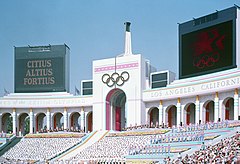


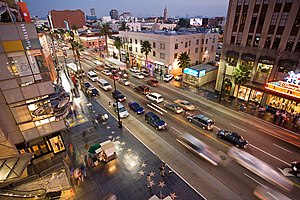










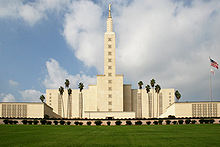
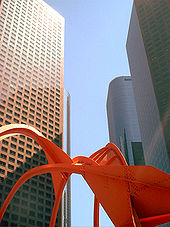

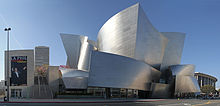
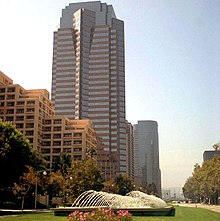





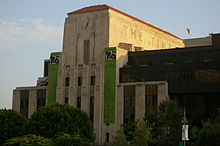
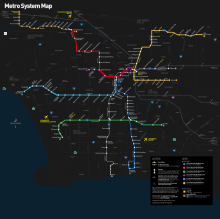
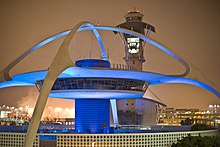
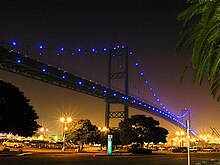
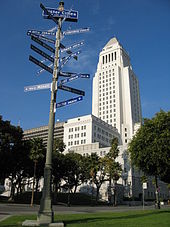
Nenhum comentário:
Postar um comentário